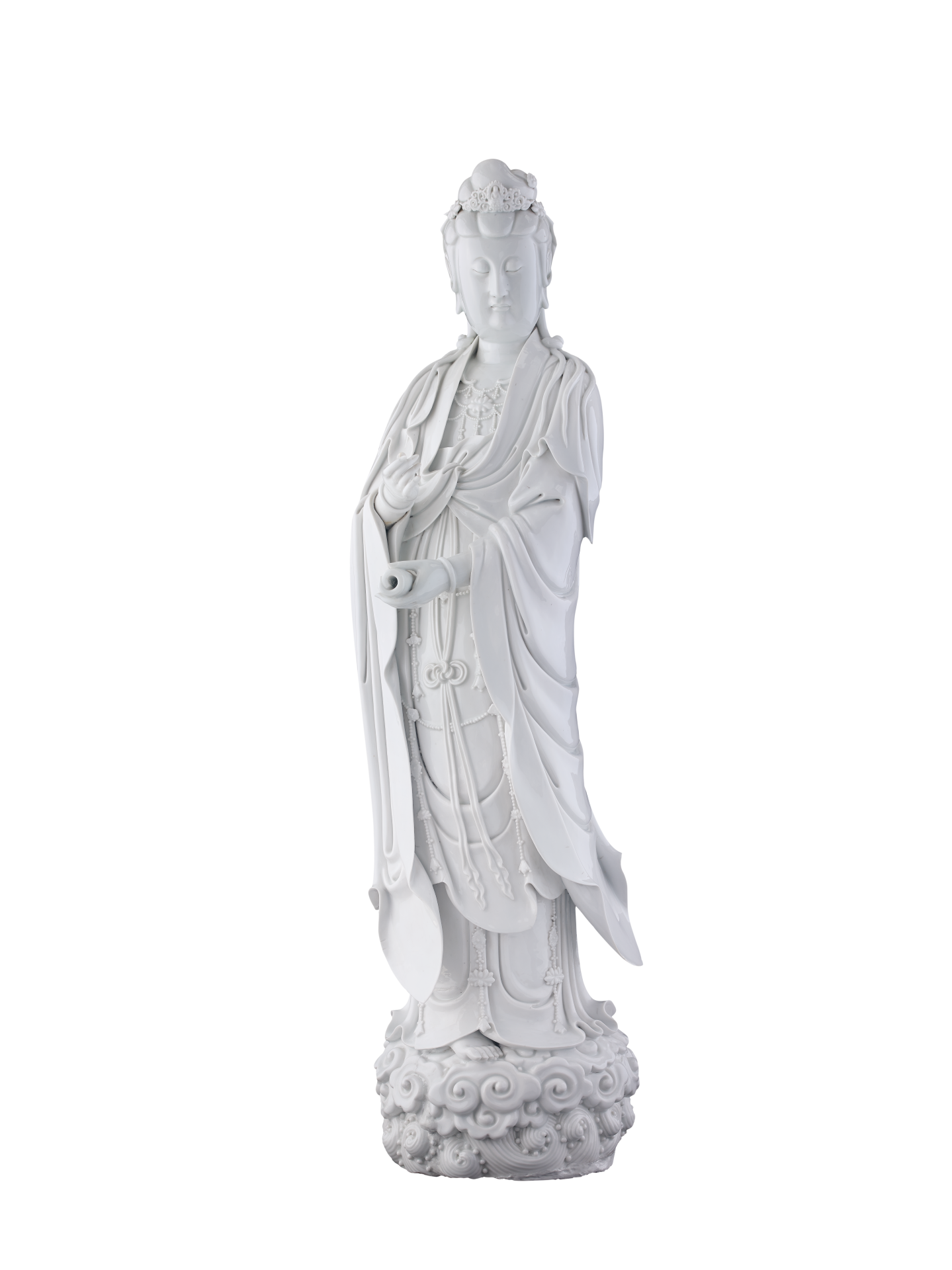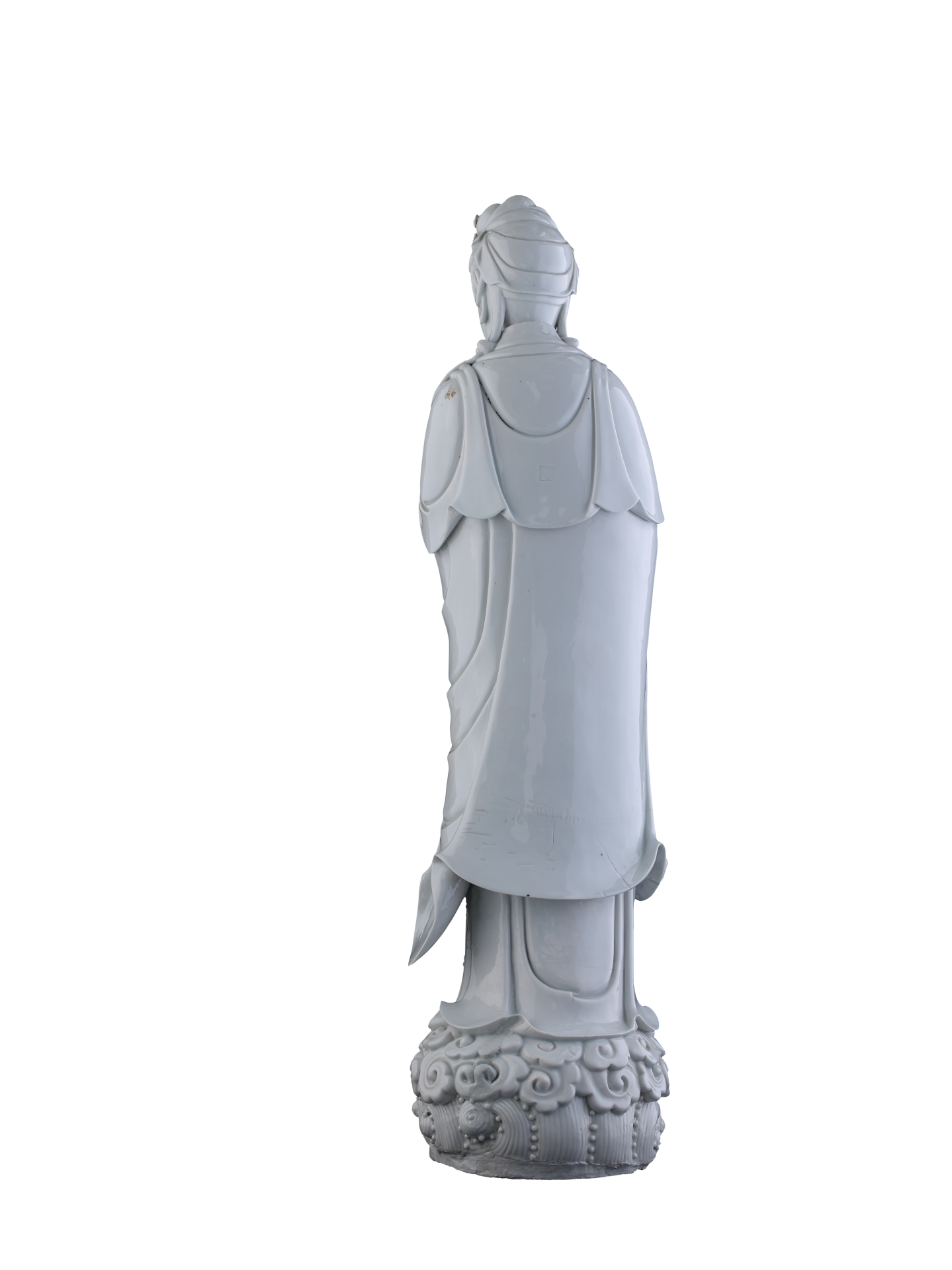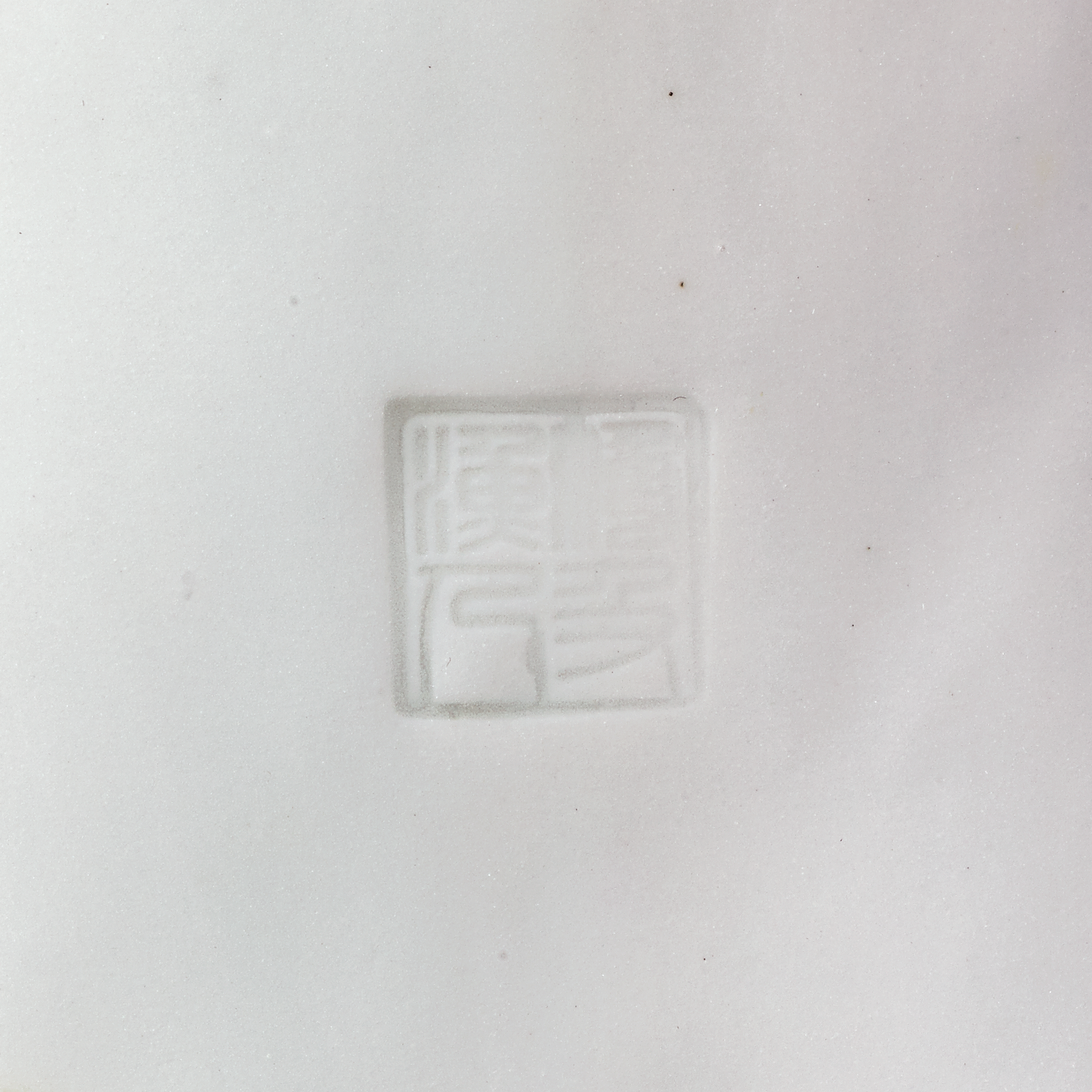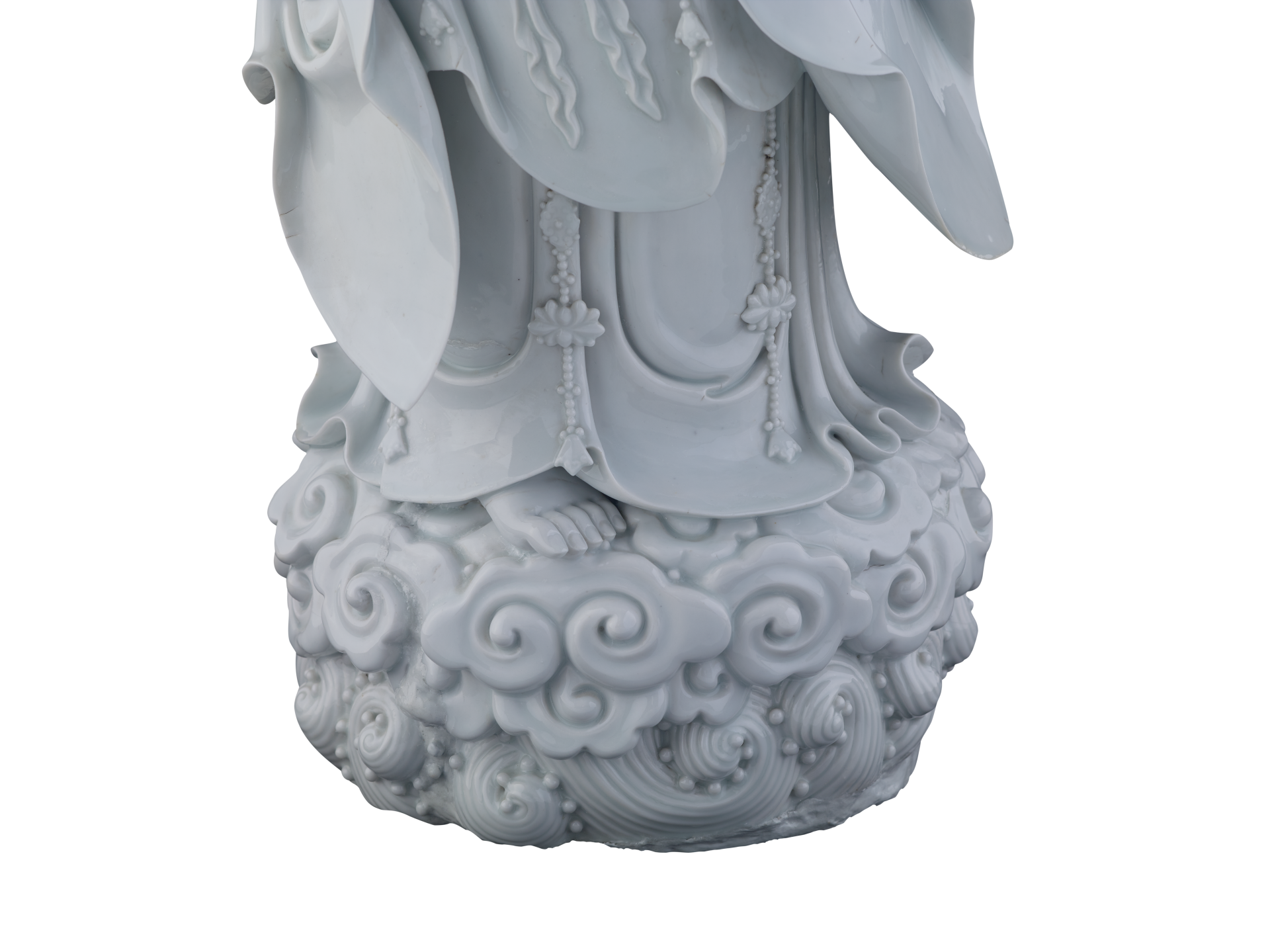Standing Scripture Guanyin Bodhisattva
This Guanyin statue with the thumb and index finger of the raised right hand touching each other, whilst the left hand holding a roll of scripture is identifiably the Scripture Guanyin. The Dehua kilns began operation in the Song dynasty (960-1279 CE) and reached the peak of its development in the Ming dynasty (1368-1644), with many great potters producing very fine porcelains especially white Buddhist statuary well-known for their exquisite workmanship and vivid forms. This tradition continued well into the 20th century.
This Guanyin has a topknot wrapped in a headdress behind a diadem with floral design and an image of Amitābha as the Amitābha Buddha, two braids of hair draping naturally over the shoulders; an oval face, close-set facial features, long narrow eyes with lifted outer corners, an elegant nose with rounded tip, a gently pursed small mouth, and a dignified and compassionate countenance. The statue appears as a Bodhisattva in female form with a lean physique, sloping round shoulders, realistically and minutely modelled limbs; a loose outer robe over strings of jewellery, a long skirt around the lower body, and bare feet stepping on clouds drifting over rolling waves.
Dehua white porcelain statuary are known for their meticulously modelled posture and limbs. This Bodhisattva turns slightly sideways with one foot ahead of the other. The elegant stance is also imbued with a sense of motion. The drapery is fluidly and vigorously rendered in high relief lines. The lower ends of the sleeves float sideward as if blown by a breeze. The strings of jewellery are minutely depicted. The shapes of the ruyi-clouds and rolling waves below the feet are highly decorative. The stylised treatment of the motifs forms a contrast with the realistic statue, demonstrating the unique aesthetics of Dehua white porcelain statuary.



